What do you do when the past decides to find you? That’s the question commercial photographer Bill Delzell posed to me when he called last week.
He explained that a series of fortuitous events led him to a mysterious bag full of unprocessed film rolls taken in San Francisco during the 1960s, at some of the most culturally significant events that occurred during that time.
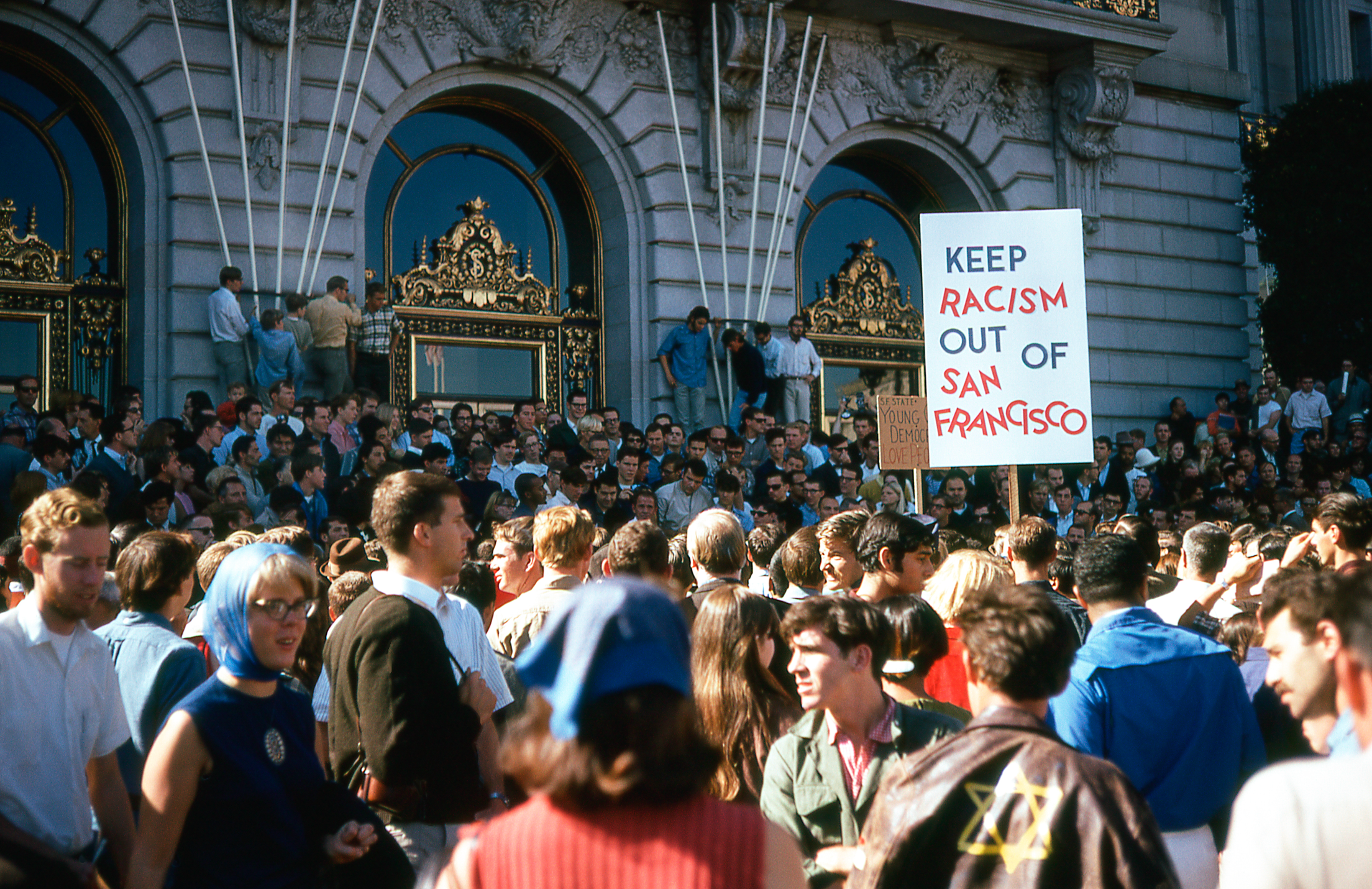
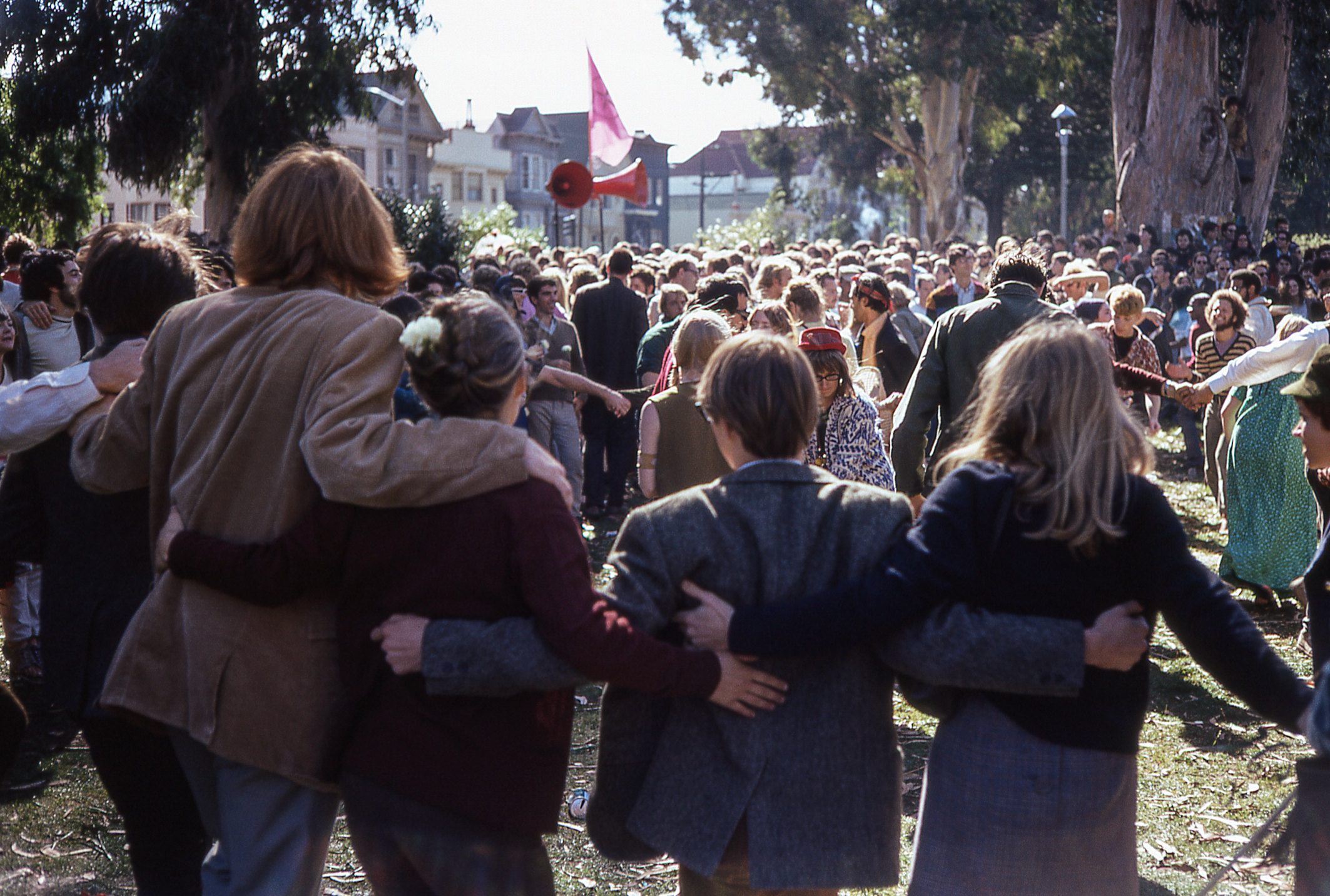
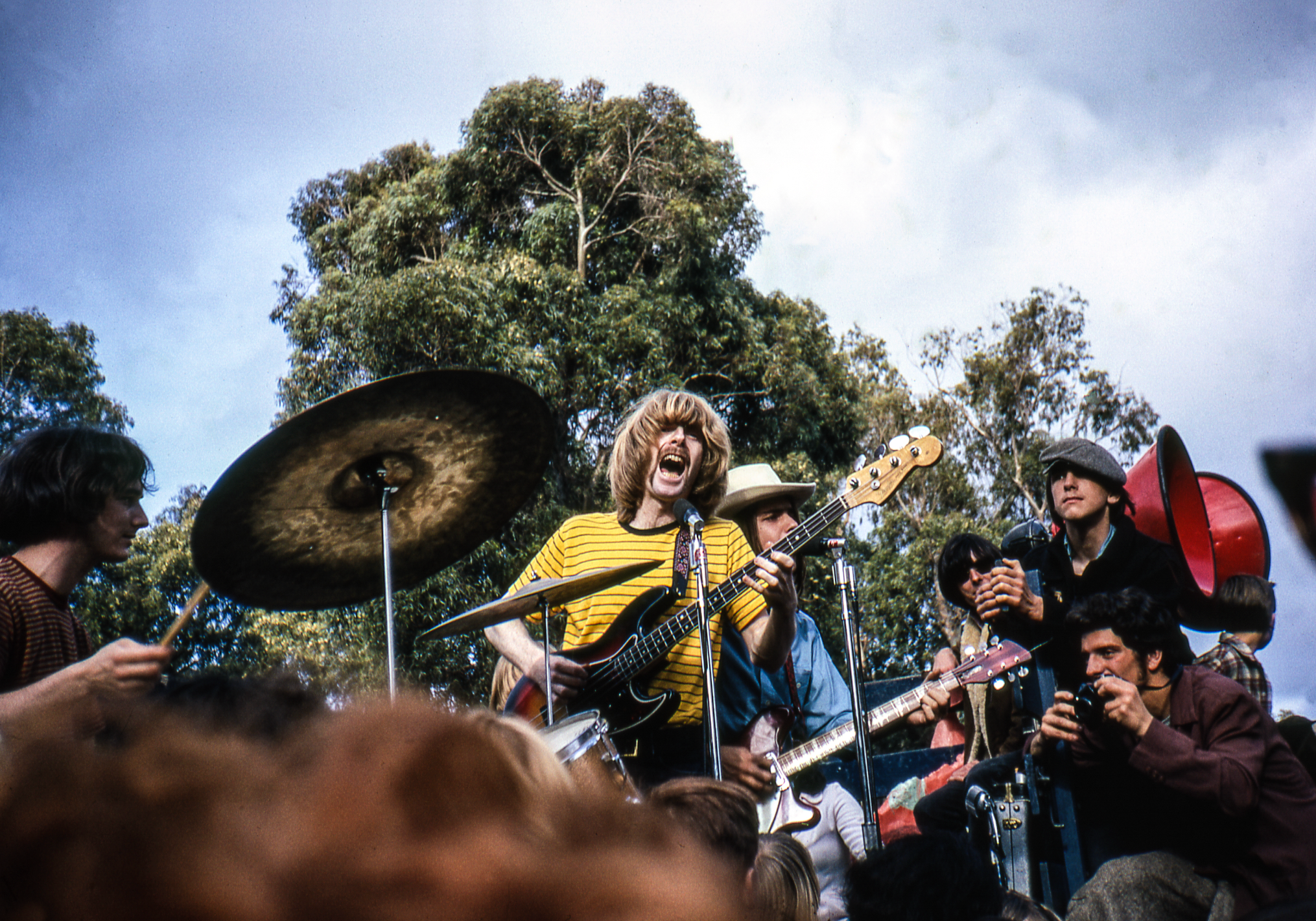
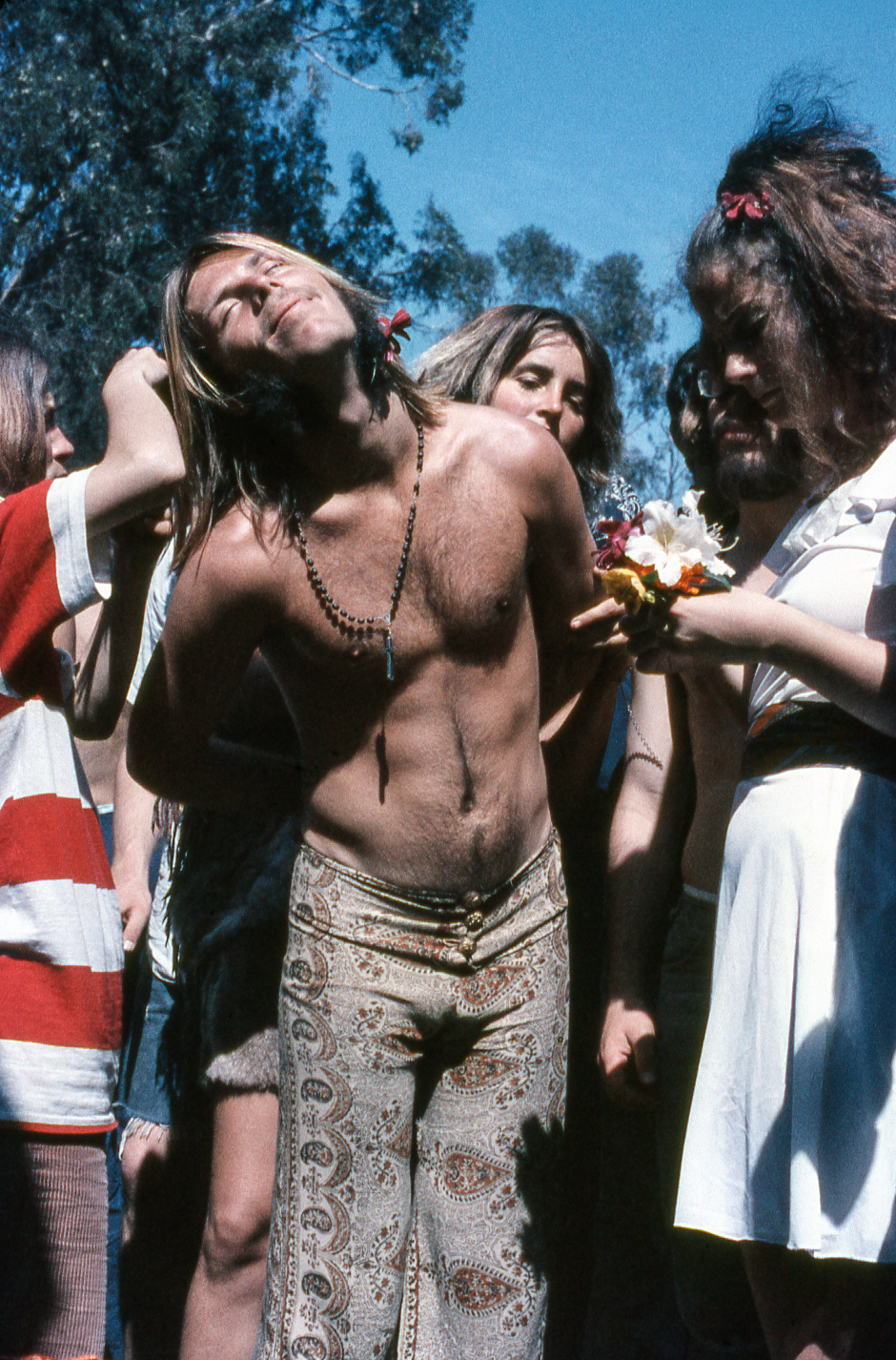
The lucky bidder
The early ’80s might not have had reality TV, but storage unit auctions were already brimming with drama. One picker unearthed a jackpot: a bag filled with 2,042 color slides and 177 rolls of meticulously labeled but unprocessed 35mm film, totaling more than 8,000 images. Over half of the film was left unprocessed, meaning that most of these images were never seen by the photographer who shot them. Enter Delzell, who got his hands on the negatives through his professional network.
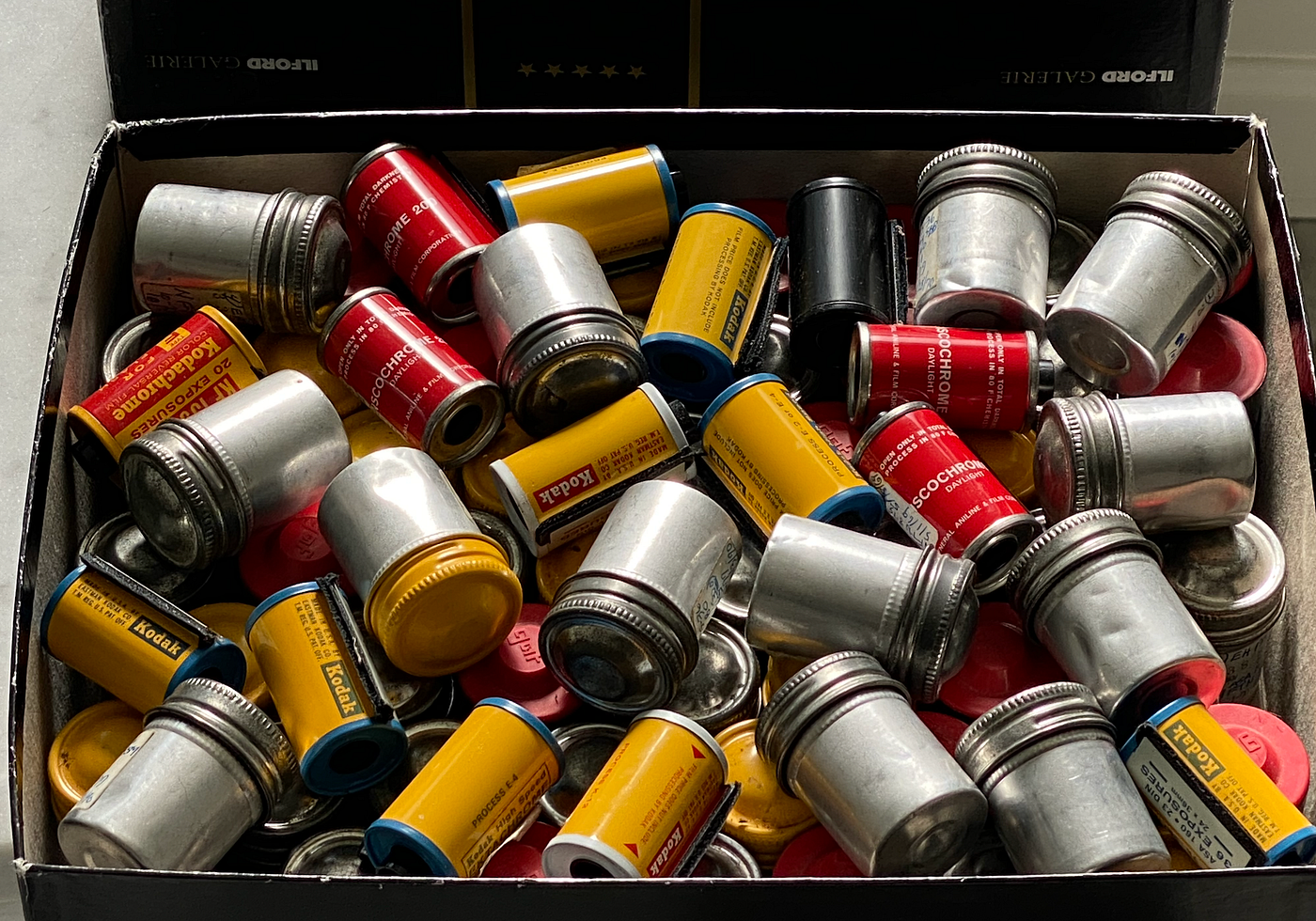
Pieces of a puzzle
Delzell sent 5 random photos from the thousands in his possession to his friend who grew up in the Haight. Katy Kavanaugh — teacher and founder of Screen360.TV — called him immediately. “I see myself,” Kavanaugh told him, because she literally saw herself in the photo:

Among the throngs of activists marching in protest of the unjust treatment of migrant farmworkers, there she is: 5-year-old Katy walking across Dolores Street amidst a crowd, holding onto her sister’s stroller. This was 1968.
Just a few days later, Delzell got a call from a photo assistant he had worked with years before. She was good friends with Stanley Mouse — legendary poster artist for the Grateful Dead. Delzell told her about the photographs and sent an equally random selection of five images. When she showed them to Mouse, he spotted himself — half a century ago, walking through Golden Gate Park on his way to see The Dead.
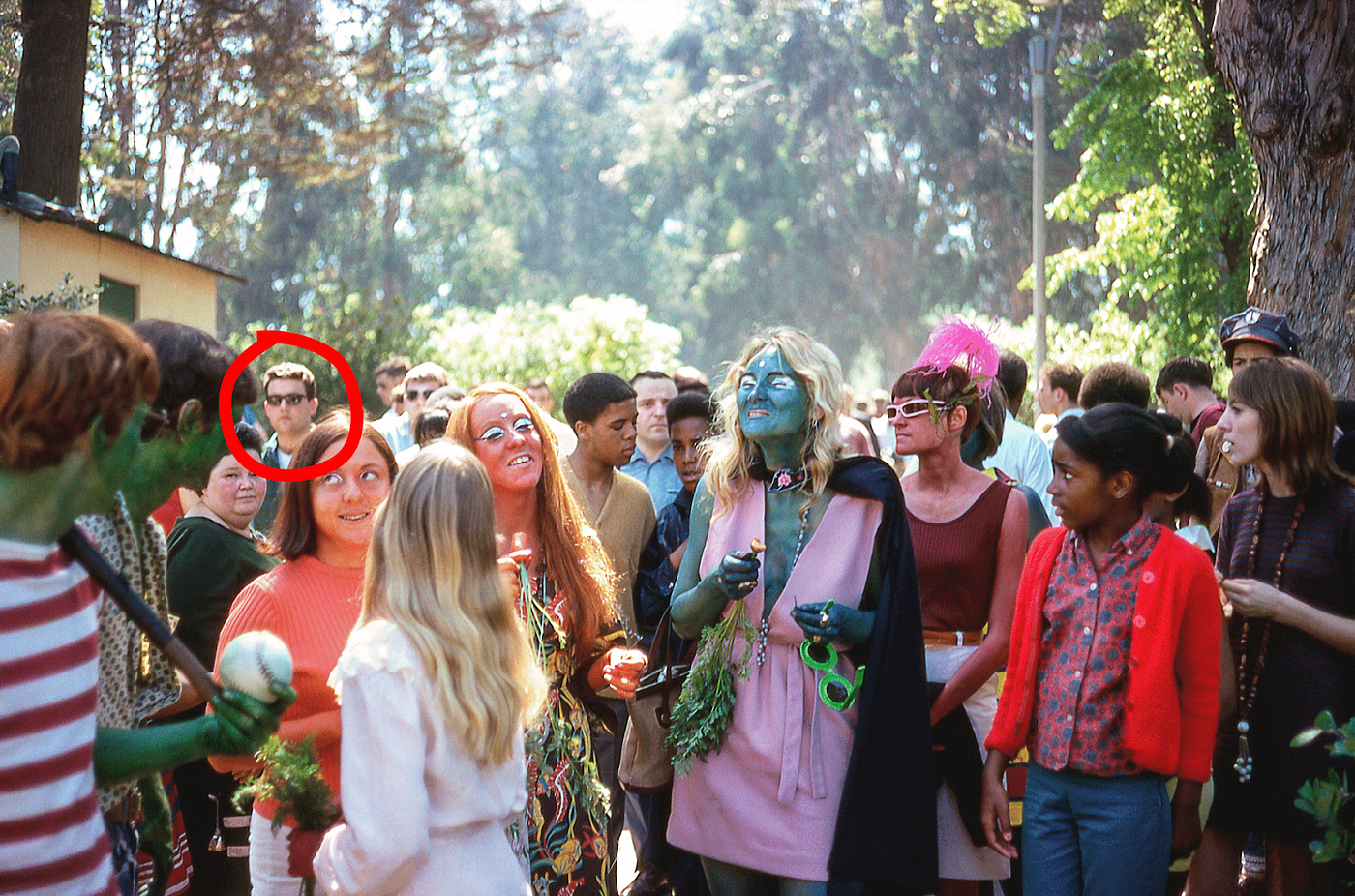
A third face surfaced when Delzell shared a deck with a friend of Sacramento music venue Harlow’s owner, who used to work at the Fillmore. Through him, it eventually made its way to San Francisco-based photojournalist, Michael Zagares, who found himself in an image, on stage with Muhammad Ali. Ali was giving a speech and asked Zagaris if he had his draft card with him. When Zagaris handed it over, Ali burned it in front of the crowd. Zagaris still has what’s left of it.

These odds are looking good. Delzell’s early efforts to leverage his network to uncover clues are proving successful, and encouraging him to dedicate his time to following through with solving the mystery of the unknown photographer.
The stranger in the frame
“What happened to the photographer? Why was the film abandoned?” Delzell asked on Reddit.
We’ve seen this often in archive work and museums: stacks of photographs with no name, no date, and no clue as to who captured them. The phenomenon’s called found photography — anonymous snapshots unearthed in storage units, estate sales, or dusty museum archives — and it’s long fascinated collectors. These orphaned images leaving a tantalizing mystery in their wake.
At the Philadelphia Museum of Art, “Unidentified” is a surprisingly familiar label. Their archives house countless photographs of unknown origins, a testament to how often the names of creators vanish over time. Similarly, the Museum of Flight contends with images of unidentified individuals, like striking photos of women working in aviation during the 1940s.
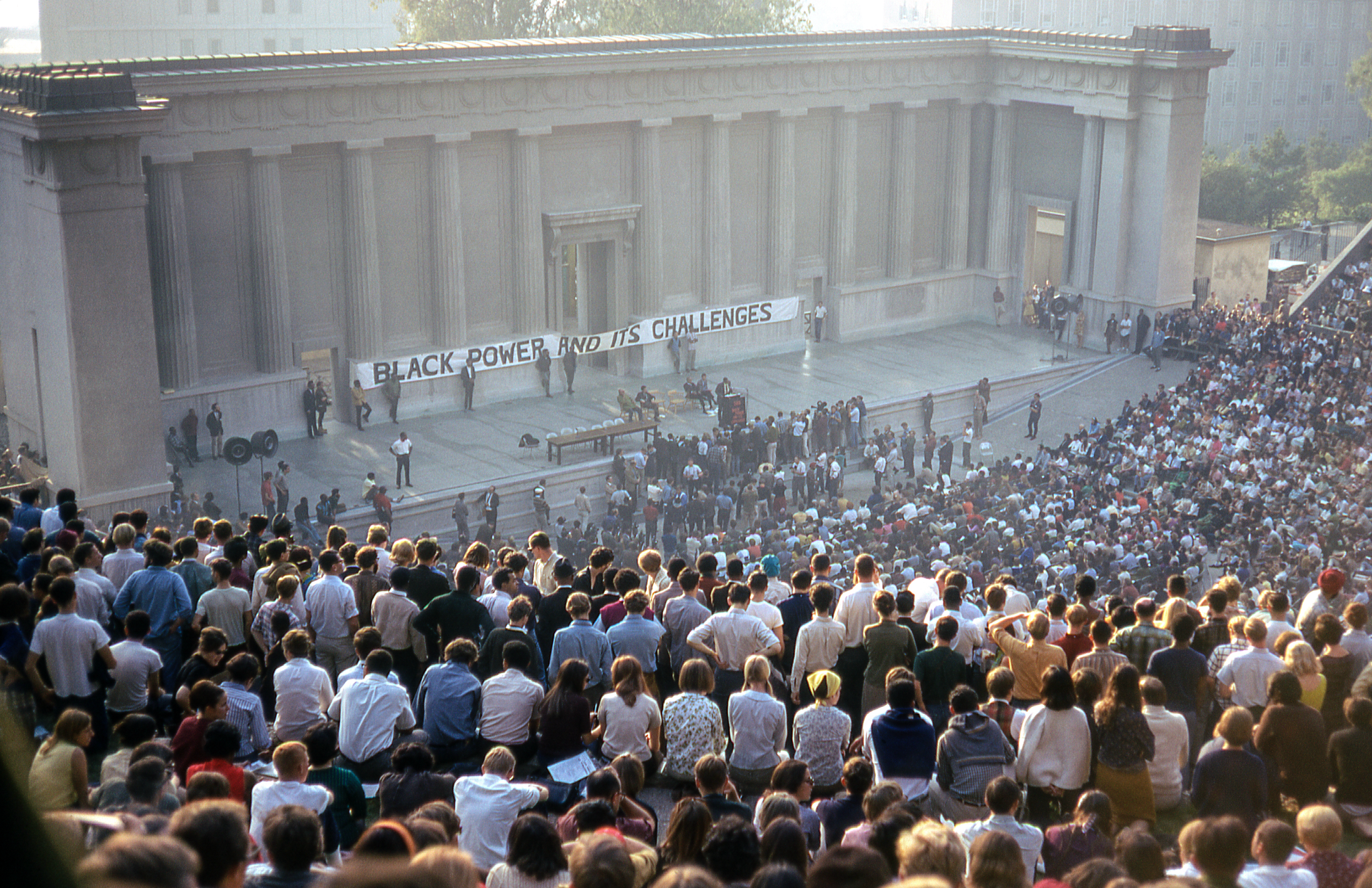
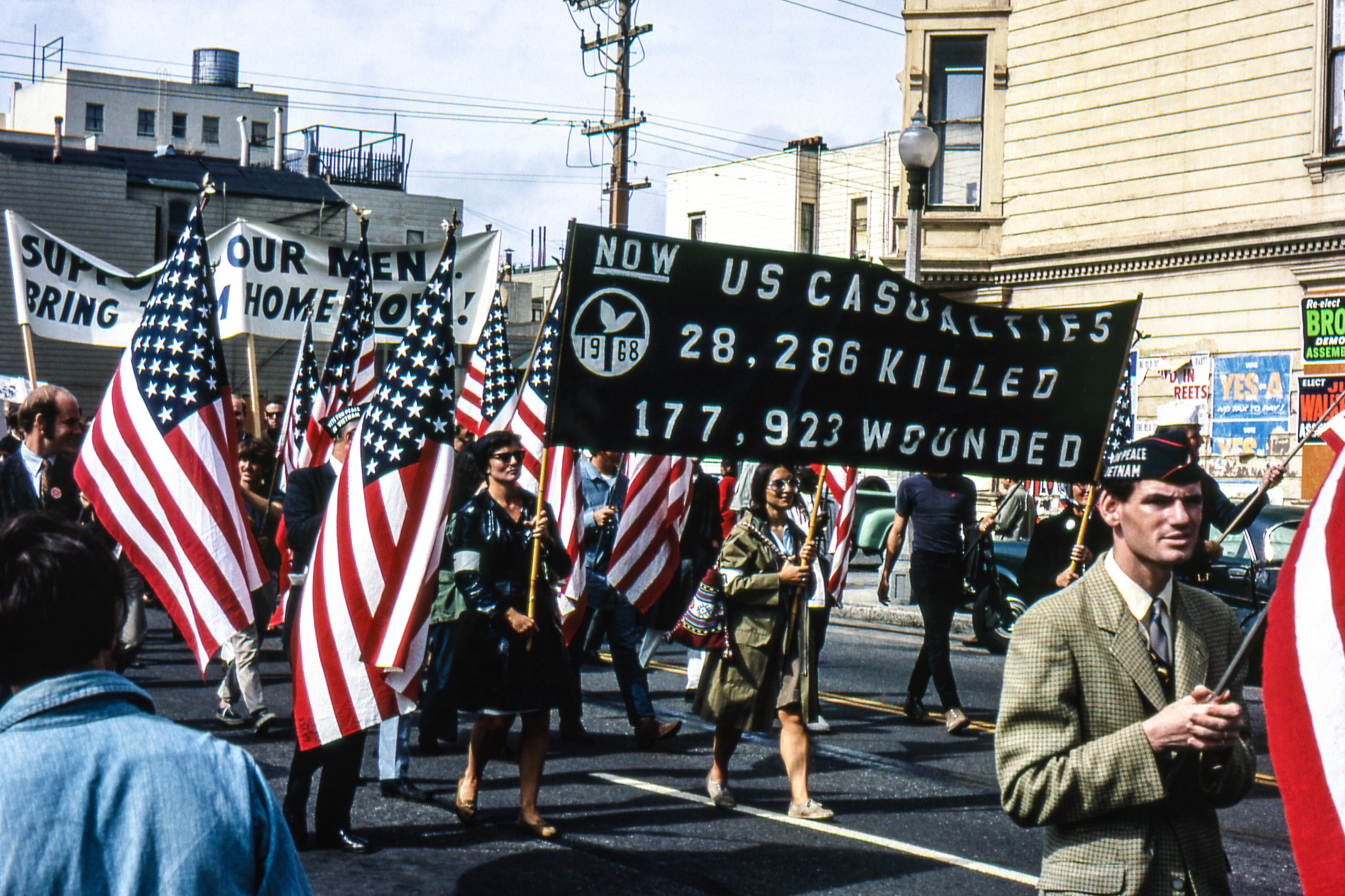


“There’s a balance between information and imagination that allows you to actually interact with the truth (which is really weird and rare),” said Al Williams, publisher of Found Magazine in the 2000s.
“That’s when you sit down with your friends and try with great joy and eventual frustration to figure out what the fuck was going on in that gramma pic.”
How AI could help
My immediate reaction to Delzell’s story was, “Let’s develop the films and post them all over social and let the internet do its thing.” But Delzell is patient and plans to follow copyright — and that’s going to cost money and time.
He needs to raise $49,000 for a youth-centered student internship via his nonprofit — SpeakLocal — to process the 75 rolls of color film and curate the 8,000 photos. These interns will use immersive AI to create a collection that can be shared with educators and communities, mobilizing the community to join the search, submit video testimonials, and identify Bay Area locations.
Help solve the mystery
SpeakLocal has only reached $12,891 of its $49,000 goal, with just a week left on the campaign. This is surprising, given that everyone who hears the story is interested and enthusiastic. It seems it’s more of a problem of exposure than buy-in from those aware that it exists.
This isn’t just a project to identify a photographer — it’s a chance to preserve the untold stories of one of the most transformative periods in history. By piecing together these fragments, Speak Local is safeguarding the memories of a generation that reshaped the world.
If you’re a Bay Area local who might recognize a location, a history buff fascinated by the counterculture movement, or just someone who loves a good mystery, this project needs your help. Visit the Who Shot Me Kickstarter campaign before January 15th to contribute, explore the images, and join the search for the photographer who captured a pivotal moment in history.
Who shot these photos? Maybe the answer lies with you.
Courtney Muro is a San Francisco-based content strategist, producer, designer, and creator.
The Bold Italic is a non-profit media organization, and we publish first-person perspectives about San Francisco and the Bay Area. Donate to us today
// We’re using images in this story provided by Bill Delzell, who cites the Fair Use Doctrine: A legal principle in the United States that allows for limited use of copyrighted material without the copyright holder’s permission. It’s intended to promote freedom of expression and creativity by allowing people to build upon prior works without unfairly depriving the copyright owner.







